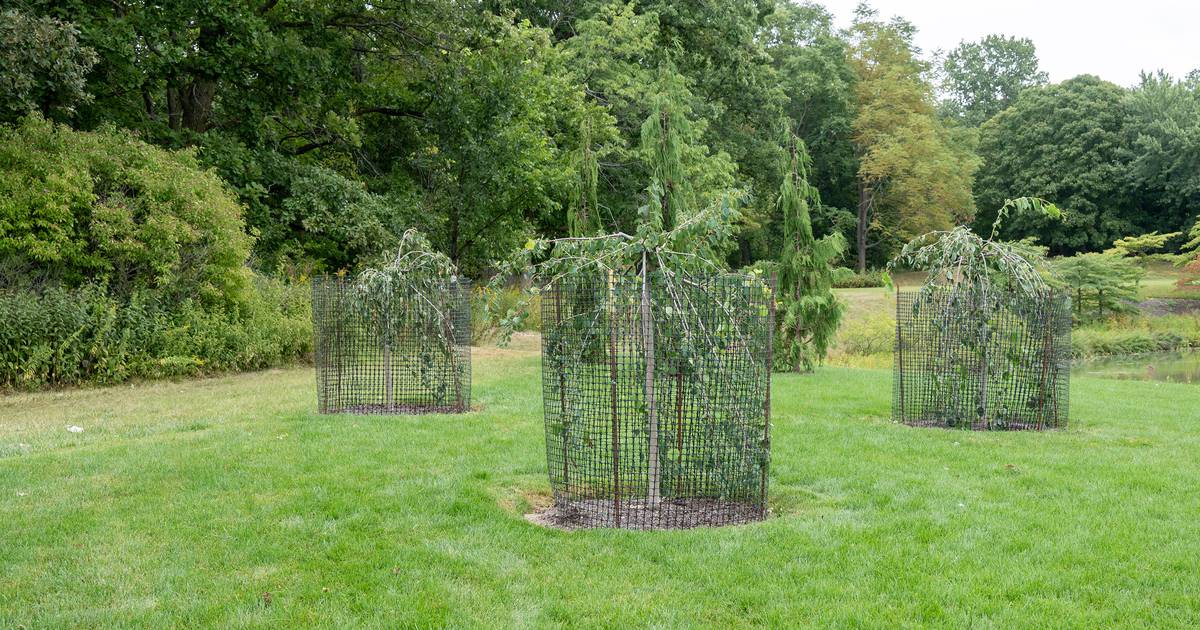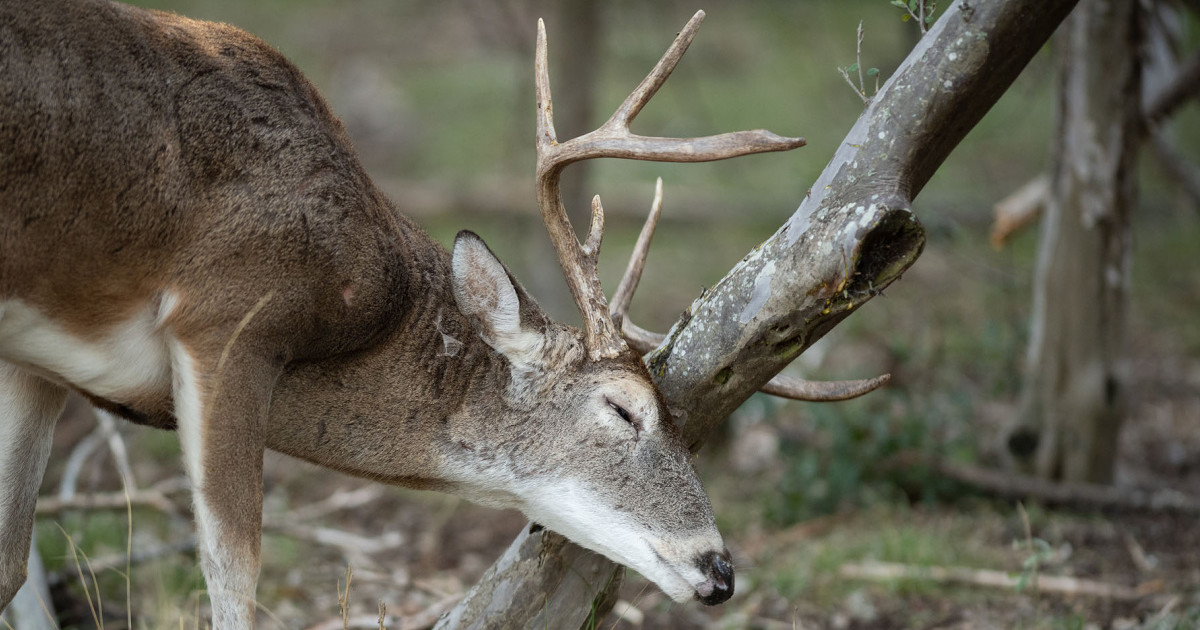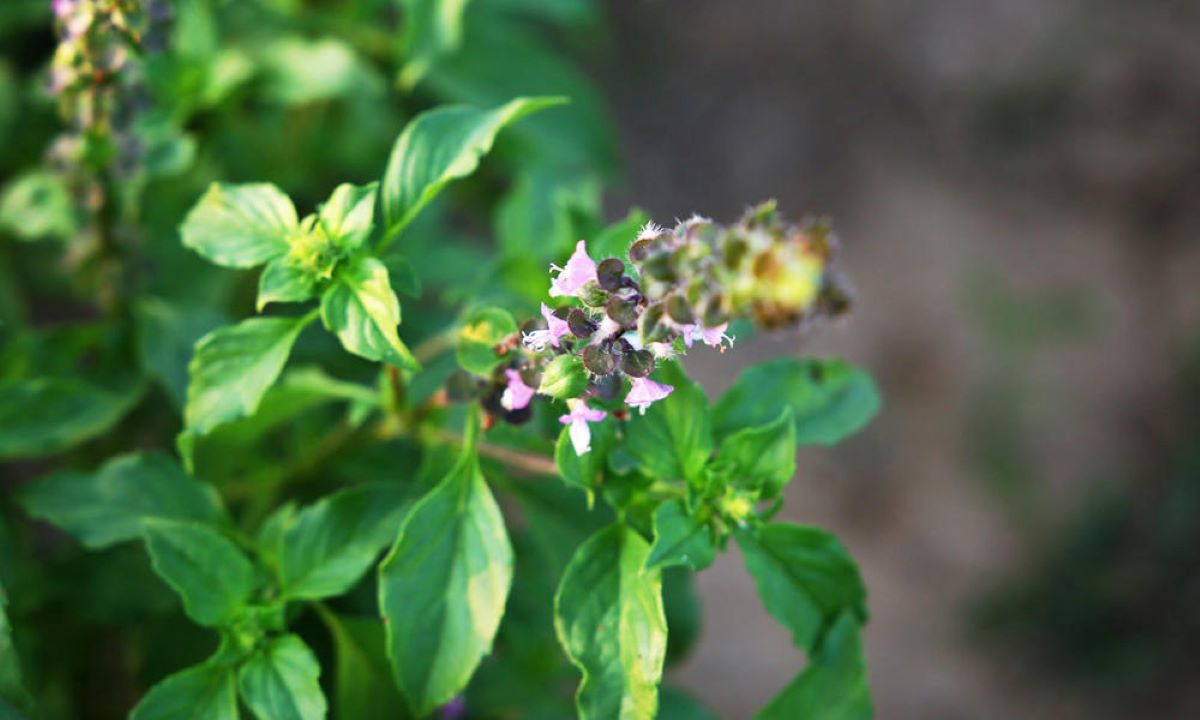Home>Gardening Tips and Tricks>Problem Solving>How To Protect Trees From Deer


Problem Solving
How To Protect Trees From Deer
Modified: January 22, 2024
Learn effective strategies for problem-solving and protecting trees from deer. Discover practical tips and expert advice to safeguard your trees and preserve their beauty.
(Many of the links in this article redirect to a specific reviewed product. Your purchase of these products through affiliate links helps to generate commission for Chicagolandgardening.com, at no extra cost. Learn more)
Table of Contents
Introduction
Deer are beautiful creatures that roam freely in many parts of the world. However, their presence can pose a significant threat to the health and well-being of trees, especially in areas where their population is dense. Deer are herbivores, and they often turn to trees as a source of food, particularly during harsh winter months when their usual food sources become scarce. Their browsing and rubbing behavior can cause severe damage to trees, stunting their growth and even killing them.
Protecting trees from deer damage is crucial, not only for the aesthetic value they add to our surroundings but also for the vital role they play in the ecosystem. Trees provide shade, reduce air pollution, help prevent erosion, and serve as habitats for countless other organisms. By implementing strategies to deter deer, we can ensure the continued health and longevity of our trees.
In this article, we will explore various methods to protect trees from deer. Whether you have a backyard garden or manage a larger landscape, these tips and techniques will help you safeguard your trees and preserve their beauty and functionality.
Understanding the Problem
Before we delve into the solutions, it’s important to have a solid understanding of the problem at hand. The first step in protecting trees from deer damage is to recognize the signs of their presence and the extent of their impact.
Deer damage to trees can manifest in several ways. One common indication is browsing, where deer feed on the leaves, buds, and twigs of trees. This can result in stripped branches, distorted growth, and leaf loss. Additionally, deer are known to rub their antlers against trees, which can cause damage to the bark and underlying tissues.
Deer tend to target young, tender trees and shrubs, as they provide a more accessible food source. However, under certain circumstances, they may also damage more mature trees. It’s important to note that the severity of deer damage can vary depending on factors such as deer population density, feeding habits, and environmental conditions.
Understanding the behavior and habits of deer can aid in developing effective strategies for tree protection. Deer are creatures of habit and tend to follow established paths or travel corridors. They are most active during dawn and dusk, making those times especially critical for implementing deterrent measures.
Determining the extent of the deer problem in your area can also be beneficial. Local wildlife agencies or experts may provide information on deer populations and their impact on trees and other vegetation. This knowledge can help you gauge the severity of the issue and select appropriate protective measures.
By comprehending the nature of the problem and recognizing the signs of deer damage, you can take steps towards safeguarding your trees and ensuring their long-term vitality.
Identifying Deer Damage
Identifying deer damage is crucial for implementing effective strategies to protect trees. By understanding the signs of deer activity, you can take proactive steps to minimize the harm they cause.
One of the primary indicators of deer damage is the presence of browsing marks on tree foliage. Deer typically leave behind jagged, torn, or shredded leaves as they nibble on twigs and branches. Look for these distinctive feeding patterns, especially in areas where young or vulnerable trees are planted.
Another telltale sign of deer activity is the presence of rubbed bark on tree trunks. Deer rub their antlers against trees, primarily during the rutting season or to shed the velvet off their antlers. This rubbing behavior can lead to damaged and girdled bark, exposing the tree to potential diseases and pests.
Observing the overall condition and growth of the trees can also provide insights into deer damage. Stunted growth, distorted branches, and sparse foliage may indicate that deer have been feeding on the tree for an extended period.
In addition to visual cues, paying attention to other wildlife behavior can be helpful. If you notice frequent deer sightings or tracks near trees, it’s likely that deer are responsible for the observed damage.
It’s important to note that while these signs are typical of deer damage, they may also be caused by other factors such as pest infestation or disease. Thus, it’s essential to consider a combination of indicators and consult with local experts or arborists if you’re unsure about the cause of tree damage.
By accurately identifying deer damage, you can take the necessary steps to protect your trees and mitigate the negative effects of deer browsing and rubbing behavior.
Choosing the Right Tree Species
Choosing the right tree species is a vital step in protecting your trees from deer damage. Certain trees are more attractive to deer than others, so selecting deer-resistant species can significantly reduce the risk of browsing and rubbing.
When considering tree species, it’s important to research which ones are known to be less palatable to deer. Native tree species are often a good choice, as they have evolved alongside local wildlife and are naturally more resistant to browsing. Some examples of deer-resistant tree species include oak, hickory, sycamore, maple, and pine.
Additionally, trees with prickly or hairy leaves, bitter-tasting sap, or strong odors tend to be less appealing to deer. Consider incorporating species such as spruce, cedar, or juniper into your landscape, as they have characteristics that make them less attractive to deer.
It’s also essential to assess the landscape and environmental conditions when deciding on tree species. Consider the soil type, sunlight exposure, and moisture levels to ensure you choose trees that are well-suited to the site. Healthy trees that are well-adapted to their environment are more likely to withstand deer browsing and recover from any damage.
Consulting with local nurseries, arborists, or horticulturists can provide valuable insights into tree species that are known to be resistant to deer in your specific region. They can help you determine the best options for your landscape, taking into account factors such as local deer populations and browsing behavior.
While selecting deer-resistant tree species is not foolproof, it can significantly minimize the risk of damage and give your trees a better chance of thriving in the presence of deer.
Physical Barriers and Fencing
One of the most effective methods for protecting trees from deer damage is to install physical barriers or fencing around them. These barriers create a physical deterrent that prevents deer from accessing and damaging the trees.
The type of physical barrier or fencing you choose will depend on the size of the area you need to protect and the level of deer activity. Here are some options to consider:
- Wire Fencing: This is a common and cost-effective option. Use a sturdy wire mesh fencing with small openings to prevent deer from squeezing through. Make sure the fence is at least eight feet tall to prevent deer from jumping over.
- Electric Fencing: Electric fencing can be an effective deterrent for deer. Use multiple strands of electrified wire around the perimeter of the area you want to protect. The electric shock will deter deer from attempting to cross the fence.
- Individual Tree Protection: For smaller areas or individual trees, consider using individual tree protectors. These can be made of heavy-duty plastic or wire mesh and are wrapped around the trunk to prevent deer browsing. Ensure that the protector extends above the deer’s reach.
- Tree Cages: If you have young trees that are particularly vulnerable to deer damage, consider placing a sturdy wire cage around each tree. This will prevent deer from reaching the tree and causing harm.
When installing physical barriers or fencing, it’s essential to ensure that they are properly secured and well-maintained. Deer are persistent animals and may attempt to find weak spots or force their way through. Regularly inspect the fencing for any damage or gaps and promptly repair them to maintain an effective barrier.
Keep in mind that while physical barriers and fencing can be highly effective, they may not be suitable for every situation. If you have a large area or a landscape with numerous trees, installing fencing around each tree may not be practical. In these cases, you may need to consider alternative methods such as repellents or companion planting to protect your trees from deer damage.
Tree Wraps and Guards
Another effective method for protecting trees from deer damage is the use of tree wraps and guards. These physical barriers provide a layer of protection specifically for the lower trunk and bark of the tree, where deer commonly rub their antlers.
Tree wraps are typically made of burlap, plastic mesh, or tree wrap fabric. They are wrapped around the lower trunk of the tree, creating a barrier between the deer and the tree’s bark. Tree wraps not only protect against rubbing damage but can also act as a deterrent from browsing on the lower branches.
When applying tree wraps, it’s important to ensure they are tightly secured to the tree and extend several feet above the ground. This will prevent deer from reaching the wrapped area and causing damage. Tree wraps should be installed before the deer rutting season begins, as that is when their rubbing behavior is most prevalent.
In addition to tree wraps, tree guards can also be used to protect the lower trunk and root zone of the tree. Tree guards are typically made of wire mesh or plastic and are placed around the base of the tree to prevent deer from accessing it. They can be particularly useful for young trees or trees with vulnerable bark.
When using tree guards, make sure they are properly installed and secured in the ground. Ensure that the space between the guard and the tree trunk is sufficient to prevent rubbing or chewing. Regularly inspect the guards for any damage or signs of deer activity and make any necessary adjustments.
It’s important to note that while tree wraps and guards are effective for protecting the lower trunk and bark of trees, they do not provide protection for the branches or foliage. Therefore, it’s crucial to combine tree wraps and guards with additional protective measures, such as fencing or repellents, to safeguard the entire tree.
By implementing tree wraps and guards, you can provide a physical barrier that discourages deer from rubbing their antlers against the trees and causing damage to the delicate bark and underlying tissues.
Deer Repellents
Deer repellents are effective tools for deterring deer from feeding on trees and can serve as a valuable addition to your tree protection strategy. These repellents work by emitting odors or tastes that are unappealing to deer, making the trees less attractive as a food source.
There are two main types of deer repellents: chemical repellents and natural repellents.
Chemical repellents typically contain ingredients such as deer deterrent soap, predator urine, or bitter tasting substances that discourage deer from browsing on trees. These repellents are typically sprayed onto the tree foliage or applied to cloth strips hung on the branches. The scent and taste of the repellents create a deterrent, causing deer to seek out other food sources.
Natural repellents, on the other hand, use organic or plant-based ingredients to repel deer. Common examples include hot pepper sprays, garlic sprays, or egg-based solutions. These natural repellents can be easily made at home or purchased from garden centers. They are applied in a similar manner to chemical repellents and work by emitting strong odors or tastes that deer find unpleasant.
When using repellents, it’s important to follow the instructions provided by the manufacturer. Repellents may need to be reapplied regularly, especially after rainfall, to maintain their effectiveness. It’s also crucial to monitor the trees for any signs of browsing or damage, and reapply the repellents as needed.
It’s important to note that while repellents can be effective, they may need to be used in conjunction with other protective measures to provide comprehensive deer deterrence. Combining repellents with fencing, tree wraps/guards, or companion planting can create a multi-layered defense system that maximizes the protection of the trees.
By utilizing deer repellents, you can deter deer from feeding on your trees and minimize the risk of damage to their foliage and branches.
Companion Planting
Companion planting is an eco-friendly and natural method that involves strategically planting certain plant species alongside trees to repel or deter deer. By choosing companion plants wisely, you can create an environment that is less enticing to deer and reduces the likelihood of them causing damage to your trees.
There are several companion plants known for their ability to repel deer due to their strong aromas, prickly textures, or unpalatable tastes. Here are some examples of companion plants that can help protect your trees:
- Herbs: Plants such as rosemary, sage, lavender, and thyme have strong scents that deter deer. Planting these herbs around your trees can help mask the appealing odors and make the area less attractive to deer.
- Perennials: Plants like yarrow, Russian sage, lamb’s ear, and coneflower have tough, fibrous leaves that deer find unappetizing. Including these perennials in your landscape can act as a natural deterrent against deer browsing.
- Ornamental Grasses: Species like Miscanthus, switchgrass, and fountain grass not only add texture and beauty to your landscape but also have foliage that deer tend to avoid. Planting ornamental grasses around your trees can help protect them from deer damage.
- Spiky or Prickly Plants: Consider planting shrubs or plants with thorns, spines, or prickly foliage, such as holly, barberry, or rugosa roses. These deterrents make it less enticing for deer to approach and potentially damage your trees.
When implementing companion planting, consider the growth habits and space requirements of both the trees and companion plants. Ensure that they are compatible and won’t compete for resources such as sunlight, water, and nutrients. Aim for a balance that creates a harmonious and diverse ecosystem while deterring deer.
It’s important to note that while companion planting can help repel deer and minimize browsing, it may not provide foolproof protection. In areas with high deer populations or severe food scarcity, deer may still venture into your landscape. Therefore, it’s advisable to combine companion planting with other protective measures such as fencing or repellents for optimal results.
By incorporating companion plants that deter deer, you can create a natural barrier around your trees and reduce the risk of deer causing damage to your landscape.
Monitoring and Maintenance
Monitoring and maintenance play crucial roles in ensuring the effectiveness of your tree protection efforts against deer damage. Regular observation and proactive measures can help identify any signs of deer activity and address potential risks promptly.
Here are some important steps to consider for monitoring and maintaining your protected trees:
- Regular Inspections: Take the time to regularly inspect your trees for any signs of deer activity, such as browsing or rubbing marks. Look for stripped branches, torn leaves, or bark damage. Early detection allows for prompt action to prevent further damage.
- Repairing Fences and Barriers: Regularly check and repair any damaged fencing or physical barriers around your trees. Ensure that they are secure and free from openings that could allow deer to access the protected area.
- Reapply Repellents: If you are using deer repellents, adhere to the recommended application schedule. Reapply the repellents as needed, especially after rainfall or when the odor/taste begins to diminish.
- Monitoring Deer Activity: Keep an eye out for signs of increased deer activity in the area. Pay attention to tracks, droppings, or browsing patterns. This information helps you assess the effectiveness of your protective measures and make necessary adjustments if needed.
- Pruning and Trimming: Regularly prune and trim your trees to remove any damaged or weak branches. This not only improves the health and appearance of the tree but can also deter deer from targeting those areas for browsing.
- Adjusting Protective Measures: As the landscape and deer behavior change over time, it may be necessary to adjust your protective measures. Adapt the height or type of fencing, relocate repellent devices, or reassess companion planting choices to maintain effective deer deterrence.
By actively monitoring the condition of your protected trees and implementing necessary maintenance measures, you can ensure the long-term success of your deer damage prevention strategies.
Conclusion
Protecting trees from deer damage is of utmost importance to maintain the health, beauty, and functionality of our landscapes. Deer browsing and rubbing behavior can have detrimental effects on tree growth and survival, making it essential to implement effective strategies for deterrence.
By understanding the problem and recognizing the signs of deer damage, we can take proactive steps to protect our trees. Choosing the right tree species, utilizing physical barriers and fencing, employing tree wraps and guards, using deer repellents, and practicing companion planting are all effective methods to minimize the risk of deer damage.
Regular monitoring and maintenance are key to ensuring the ongoing success of our tree protection efforts. By inspecting our trees, repairing fencing, reapplying repellents, and making necessary adjustments, we can address any potential risks and maintain the integrity of our protective measures.
It’s important to note that while no method can provide absolute protection against deer damage, combining multiple strategies and techniques will maximize our chances of success. Flexibility and adaptability are crucial as we fine-tune our approach based on local deer populations, environmental conditions, and the unique needs of our landscapes.
By implementing these strategies, we can foster healthy and flourishing trees that serve as valuable assets to our environment and enhance the beauty of our surroundings.










